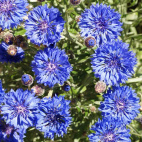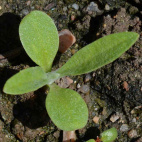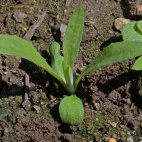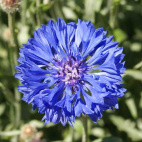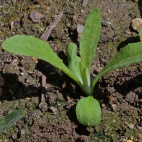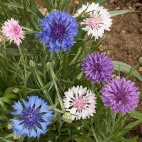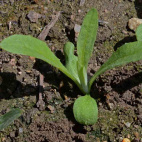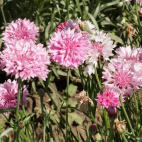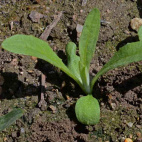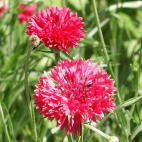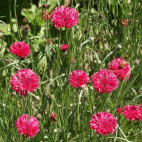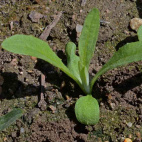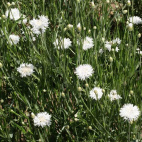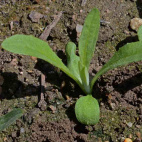Color
Availability
USDA Zone
Region
Type
Duration
Season
Germination
Soil
Sunlight
Height
Use
Narrow Your Search
Color
Availability
USDA Zone
Region
Type
Duration
Season
Germination
Soil
Sunlight
Height
Use
Wildflowers - Bachelor's Buttons Seeds
These old-fashioned favorite cornflower seeds continues to be popular for its bright, cheerful colors and ease of care. Originating in Europe, this variety is also known as cornflower for its habit of growing among field crops. Although an annual, the vigorous plant readily self-sows, and comes back as if a perennial. The long-lasting blooms from these Bachelor Button seeds make wonderful fresh bouquets as well as dried floral arrangements. The versatile variety of these Bachelor Button flowers grow in most zones of the United States. Explore our selection of Bachelor Button flower seeds below!
-
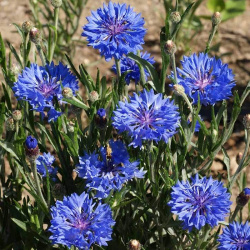 Dwarf Blue Bachelor Button Cornflower Seeds
Centaurea cyanus
Best known for its vivid blue color, this old-fashioned annual wildflower continues to be a favorite. Lovely fresh or dried, this dwarf grows less than a foot tall and works well in small spaces.Quick View$3.48 Pkt - $5.96 / Oz
Dwarf Blue Bachelor Button Cornflower Seeds
Centaurea cyanus
Best known for its vivid blue color, this old-fashioned annual wildflower continues to be a favorite. Lovely fresh or dried, this dwarf grows less than a foot tall and works well in small spaces.Quick View$3.48 Pkt - $5.96 / Oz -
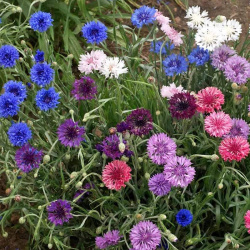 Polka Dot Bachelor Button Seed Mix
Centaurea cyanus
This easy-to-grow favorite annual comes in a bright mix of blue, purple, pink, white, and rose. Excellent for dried flower arrangements or potpourri. The plant is a dwarf, so it is great for gardens with limited space.Quick View$3.48 Pkt - $5.96 / Oz
Polka Dot Bachelor Button Seed Mix
Centaurea cyanus
This easy-to-grow favorite annual comes in a bright mix of blue, purple, pink, white, and rose. Excellent for dried flower arrangements or potpourri. The plant is a dwarf, so it is great for gardens with limited space.Quick View$3.48 Pkt - $5.96 / Oz -
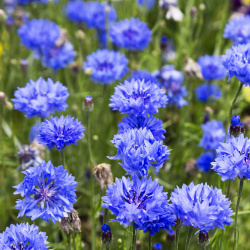 On Sale!
Tall Blue Bachelor Button Cornflower Seeds
Centaurea cyanus
Perhaps the most recognized feature of this annual wildflower is its famous shade of cornflower blue. These easy-to-grow beauties reach a medium height and are at home in every carefree garden.Quick View$3.48 Pkt - $5.96 / Oz
On Sale!
Tall Blue Bachelor Button Cornflower Seeds
Centaurea cyanus
Perhaps the most recognized feature of this annual wildflower is its famous shade of cornflower blue. These easy-to-grow beauties reach a medium height and are at home in every carefree garden.Quick View$3.48 Pkt - $5.96 / Oz -
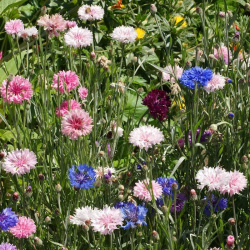 On Sale!
Tall Bachelor Button Cornflower Seed Mix
Centaurea cyanus
Shades of red, white, pink, and blue will brighten any corner of the garden with this favorite old-fashioned annual. The longer stems of this variety are perfect for fresh or dried flower arrangements.Quick View$3.48 Pkt - $5.96 / Oz
On Sale!
Tall Bachelor Button Cornflower Seed Mix
Centaurea cyanus
Shades of red, white, pink, and blue will brighten any corner of the garden with this favorite old-fashioned annual. The longer stems of this variety are perfect for fresh or dried flower arrangements.Quick View$3.48 Pkt - $5.96 / Oz -
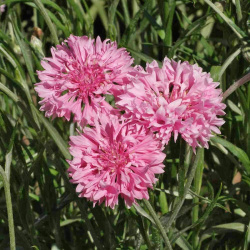 Tall Pink Bachelor Button Cornflower Seeds
Centaurea cyanus
Blushing pink blossoms add beauty and charm to any garden or bouquet. This annual heirloom variety has long stems, so it is perfect for creating fresh or dried flower arrangements.Quick View$3.25 Pkt - $6.67 / Oz
Tall Pink Bachelor Button Cornflower Seeds
Centaurea cyanus
Blushing pink blossoms add beauty and charm to any garden or bouquet. This annual heirloom variety has long stems, so it is perfect for creating fresh or dried flower arrangements.Quick View$3.25 Pkt - $6.67 / Oz -
 Tall Red Bachelor Button Cornflower Seeds
Centaurea cyanus
Bright as a button, these annual crimson blooms will bring cheer to any occasion. Beautiful for fresh or dried flower arrangements with its long stems.Quick View$3.25 Pkt - $5.96 / Oz
Tall Red Bachelor Button Cornflower Seeds
Centaurea cyanus
Bright as a button, these annual crimson blooms will bring cheer to any occasion. Beautiful for fresh or dried flower arrangements with its long stems.Quick View$3.25 Pkt - $5.96 / Oz -
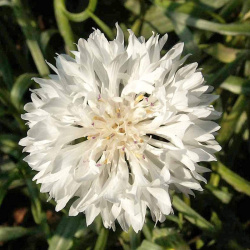 Tall White Bachelor Button Cornflower Seeds
Centaurea cyanus
Pop this white beauty into a buttonhole for any special occasion. This wildflower is an annual that looks great in the garden, in a fresh bouquet, or in a dried flower arrangement.Quick Viewx
Tall White Bachelor Button Cornflower Seeds
Centaurea cyanus
Pop this white beauty into a buttonhole for any special occasion. This wildflower is an annual that looks great in the garden, in a fresh bouquet, or in a dried flower arrangement.Quick ViewxTall White Bachelor Button Cornflower Seeds
Centaurea cyanus
Pop this white beauty into a buttonhole for any special occasion. This wildflower is an annual that looks great in the garden, in a fresh bouquet, or in a dried flower arrangement.
$3.25 Pkt - $6.67 / Oz
These old-fashioned favorite cornflower seeds continues to be popular for its bright, cheerful colors and ease of care. Originating in Europe, this variety is also known as cornflower for its habit of growing among field crops. Although an annual, the vigorous plant readily self-sows, and comes back as if a perennial. The long-lasting blooms from these Bachelor Button seeds make wonderful fresh bouquets as well as dried floral arrangements. The versatile variety of these Bachelor Button flowers grow in most zones of the United States. Explore our selection of Bachelor Button flower seeds below!







